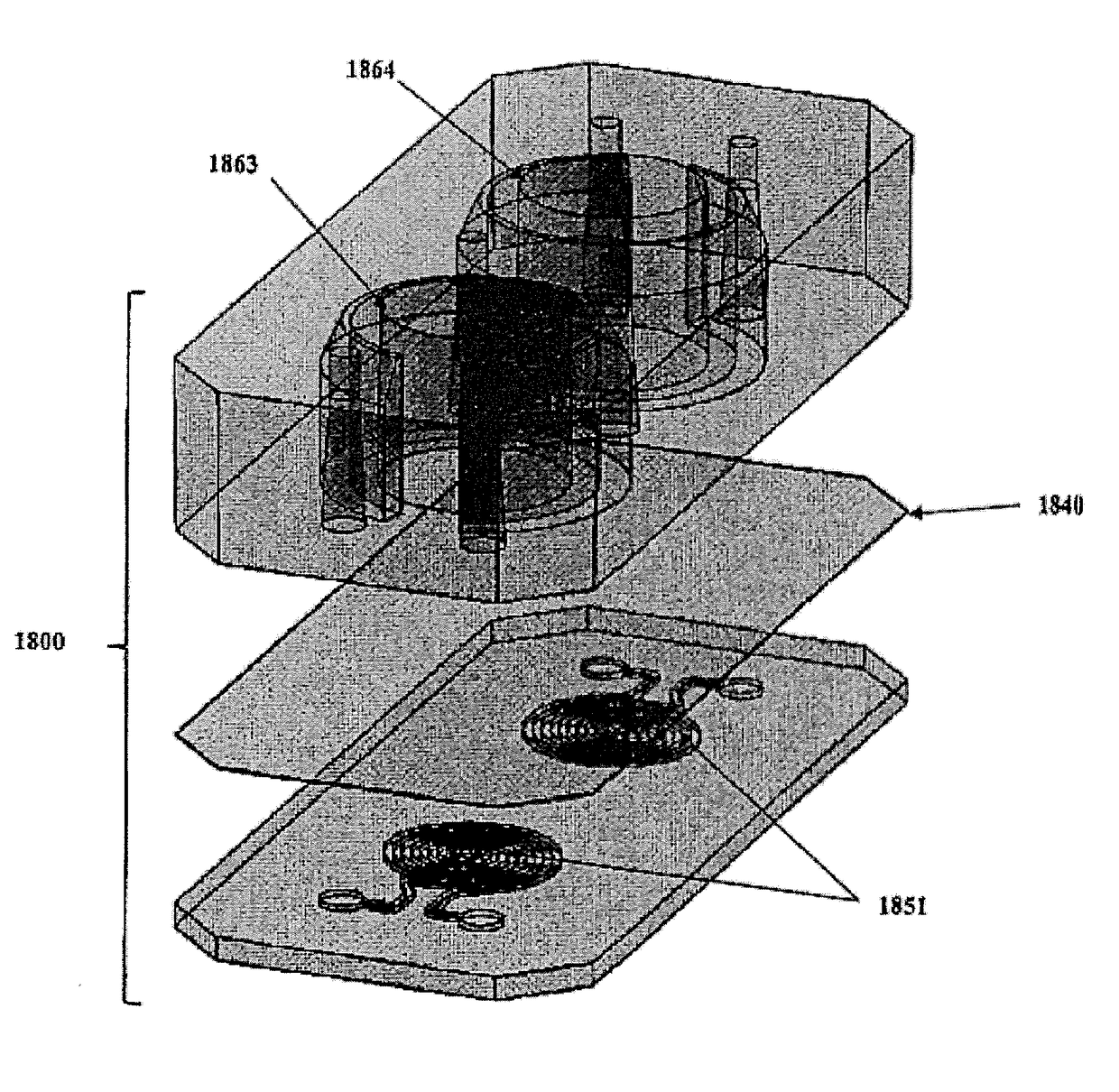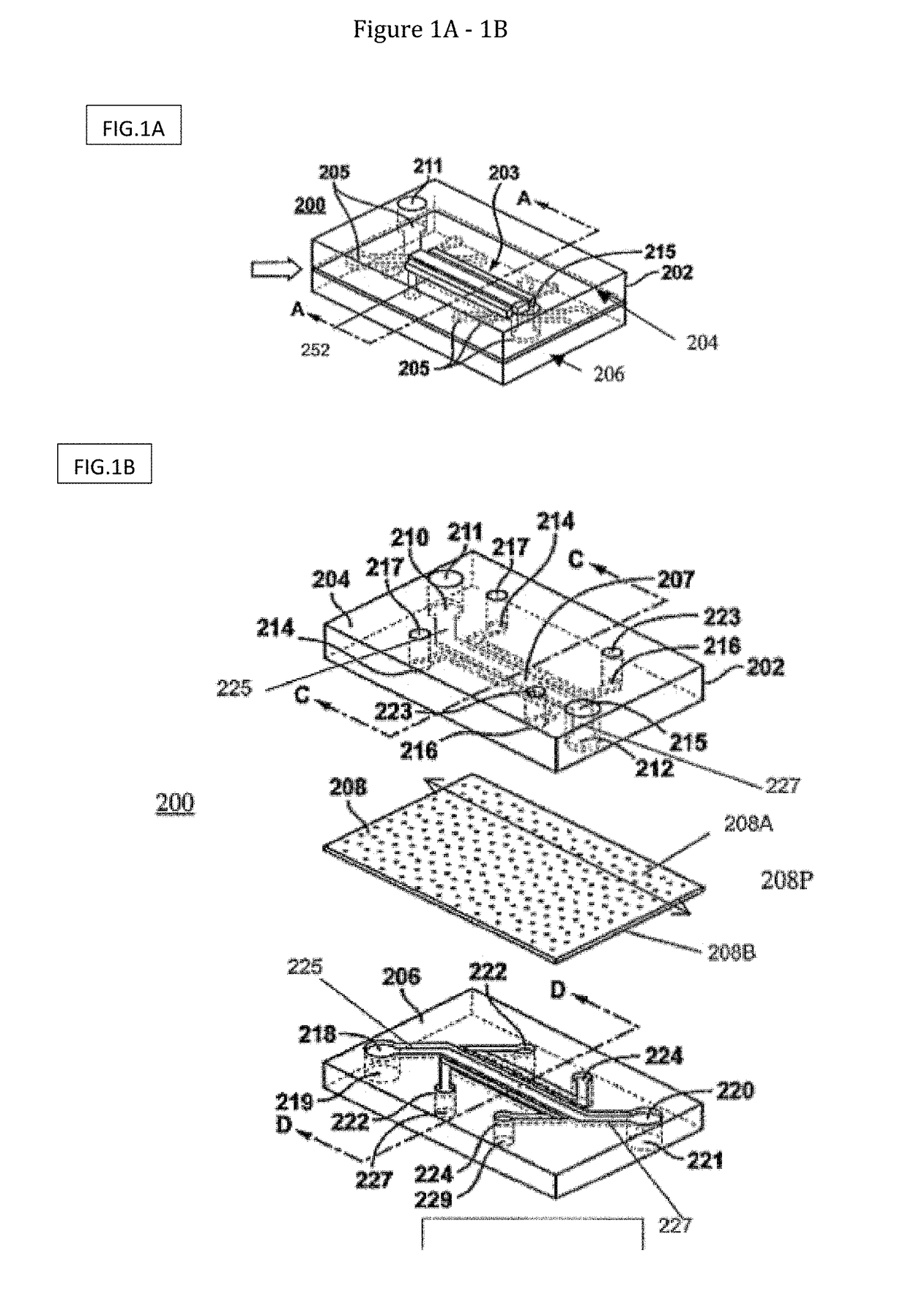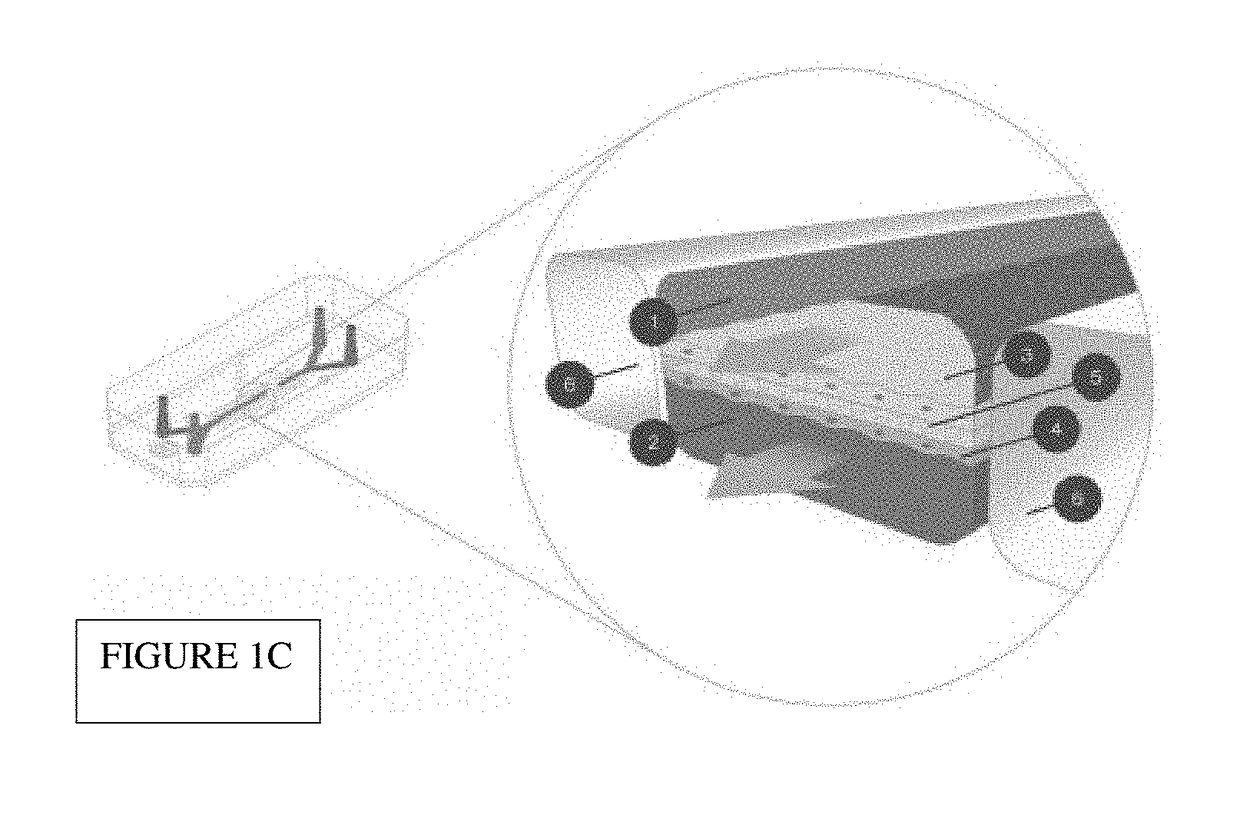In vitro epithelial models comprising lamina propria-derived cells
a technology of lamina propria and epithelial cells, applied in biochemistry apparatus and processes, laboratories, instruments, etc., can solve the problems of large limitations of models, limited cellular heterogeneity, and complex 3-dimensional (3d) architecture of explant cultures, and achieve the effect of reducing inflammation in epithelial regions
- Summary
- Abstract
- Description
- Claims
- Application Information
AI Technical Summary
Benefits of technology
Problems solved by technology
Method used
Image
Examples
example 1
Lung On-Chip: Evaluation of Epithelial Cells in the Upper Compartment
[0234]In one embodiment, an exemplary timeline was used for preparing, seeding, and evaluating an Alveolus Lung-On-Chip. FIG. 5 shows an exemplary schematic of one embodiment of an experimental timeline where Gel preparation is on Day −2; ECM is added to microchannels on Day −1; Cell seeding is on Day 0; Air-Liquid Interface is established by Day 5; Stretch of 4% begins on Day 9; Stretch of 10% begins on Day 12 which may continue up to Day 15. Cell seeding included fibroblast cells within a gel, alveolar epithelial cells overlaying the gel in the upper channel, and endothelial cells in the lower channel. Incorporation of more physiologically relevant ECM (Elastin).
[0235]In some embodiments, mechanical stretch was providing using vacuum applied to vacuum channels for moving the membrane within the chip simulating in vivo breathing movements. In some embodiments, read-outs, i.e. evaluation, includes but is not limite...
example 2
Lung On-Chip: Evaluation of Stromal Cells in the Stromal Compartment
[0246]Human primary lung fibroblasts have been incorporated within the 3D stromal compartment of the chip, see highlighted area on-chip shown in FIG. 4C. Incorporation of Lung Fibroblasts On-Chip rhodamine phalloidin (PHDR1)Alexa Fluor® 488 Phalloidin binds to F-actin proteins.
[0247]FIGS. 13A-B Show exemplary micrographs demonstrating the presence of lung fibroblasts. FIG. 13A lung fibroblasts stained for Phalloidin (pink) and Nuclei (blue). FIG. 13B Phalloidin (pink) and Type I-Like cells (green). White Bar=100 um.
[0248]FIGS. 14A-C Show exemplary micrographs demonstrating assessment of Fibroblast Viability growing on-chip. FIG. 14A Maximum intensity projection of Z-Stack. FIG. 14B Live / Dead. FIG. 14C Phase Contrast (left) Phase Contrast Merge with Live / Dead. Live / dead staining shows high percentage of cell surviving on chip on day 15 post-seeding. Dead fibroblasts: rounded morphology and red nuclei. Live fibroblast...
example 3
Lung On-Chip: Evaluation of the Lower Vascular Compartment
[0252]FIG. 17 Shows exemplary micrographs demonstrating microvascular endothelial cells expressing typical endothelial cells markers and covering the entire surface of vascular channel at 2 post seeding. Left to right: PECAM-1; VE-Cadherin; and VWF.
PUM
 Login to View More
Login to View More Abstract
Description
Claims
Application Information
 Login to View More
Login to View More - R&D
- Intellectual Property
- Life Sciences
- Materials
- Tech Scout
- Unparalleled Data Quality
- Higher Quality Content
- 60% Fewer Hallucinations
Browse by: Latest US Patents, China's latest patents, Technical Efficacy Thesaurus, Application Domain, Technology Topic, Popular Technical Reports.
© 2025 PatSnap. All rights reserved.Legal|Privacy policy|Modern Slavery Act Transparency Statement|Sitemap|About US| Contact US: help@patsnap.com



